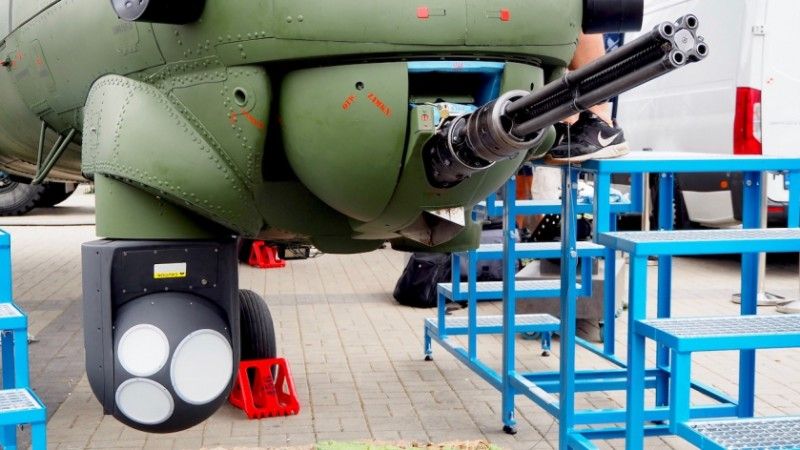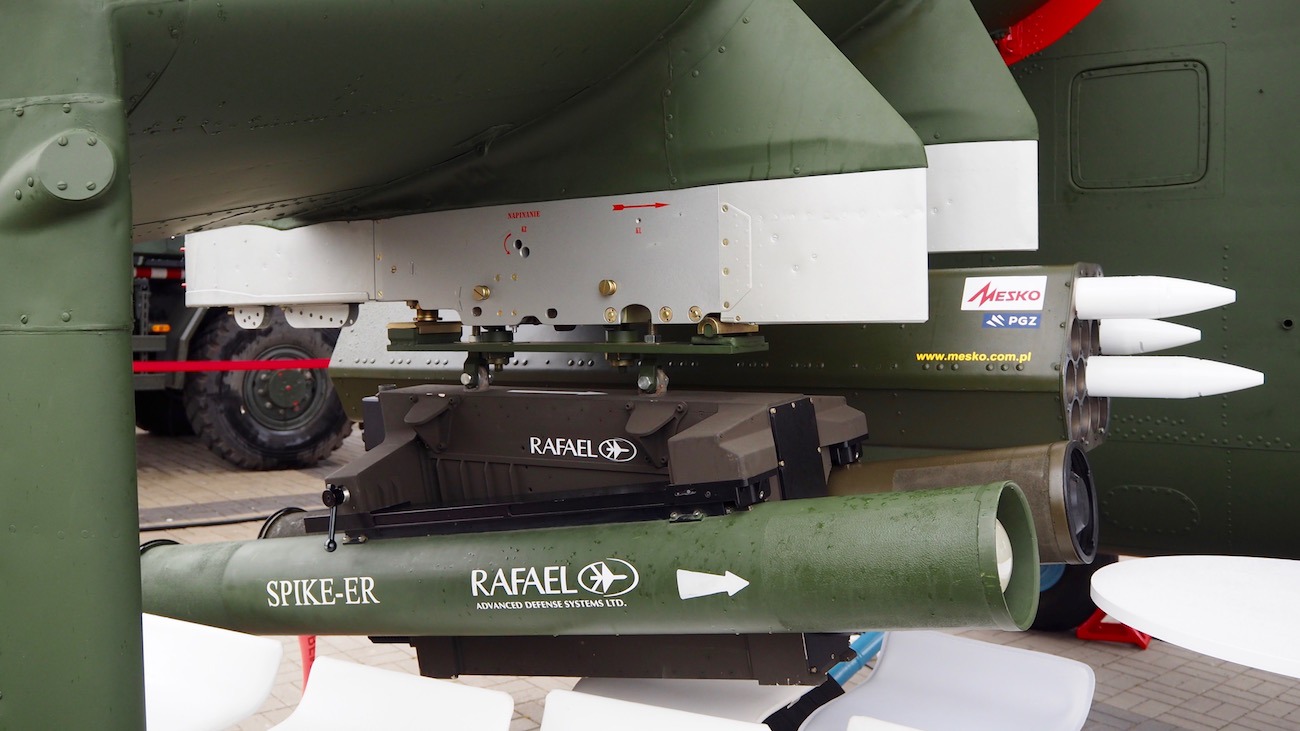Polish Mi-24 Modernization - Another Stage Begins [COMMENTARY]

“Only the weapons system and the sensors would be modernized, in case of the Mi-24 helicopters. We have finalized the analysis within that scope and we are currently awaiting the final assessment of the emergence of the basic national security interest”, Col. Waldemar Bogusławski, Deputy Head at the Armament Inspectorate for Aviation and Naval Technology announced, during the Defence24 DAY conference. The above means that this upgrade, delayed by decades, could be accelerated. Moreover, the helicopters could regain their anti-tank capability.
Only the weapons system and the sensors would be modernized, in the case of the Mi-24 helicopters. Requirements as such have been prepared and requirements as such have been assessed. We have finalized the analysis within that scope and we are currently awaiting the final assessment of the emergence of the basic national security interest. Obviously, depending on the results of the analysis, our conclusions would need to be updated. Only after that, we will be able to ultimately present the relevant documents for acceptance, to the parties of the procurement system.
This declaration has been made by Col. Bogusławski during the “Development of the Helicopter Fleet of the Polish Armed Forces. Challenges and Prospects” panel. It has quite a fundamental meaning for the operational capabilities of the Polish Army Aviation. This also shows that the programme is viewed as a priority. The analytical-conceptual stages or technical dialogues sometimes take years. In the case of the Mi-24 upgrade, the procedure has been launched in January last year. The list of 15 dialogue participants was known a month later, with the procedure brought to closure in September this year.
Fatigue tests began in September 2019, parallel to the tech-dialogue. Their goal was to “confirm the fatigue durability that ensures that the helicopter can fly for 5,500 hours and carry out 14,000 landings”, as a description of the order issued in September 2019 specifies. This was to show whether the Mi-24D ad Mi-24W airframe structures could be used long enough to justify the modernization. The above also means that even though work could be taking place on preparing the Mi-24 upgrade, within the scope defined by the Armament Inspectorate, the contract will only be ready for the conclusion next year, with the upgraded helicopters being handed off in 2-3 years.
On one hand, this is positive news. The modernization could be quick, unless the work is not hampered by the procedures - such as the processing at the Polish Ministry of Defence that could take for years, aimed at verifying whether the so-called Basic National Security Interest emerges for the given undertaking. Undoubtedly, it would be beneficial to accomplish this task rapidly.

This shall be viewed as a recovery of the basic operational capability of the Mi-24 helicopter, within the scope of the mission that these aircraft are to carry out: acting against enemy armour and other relevant threats, with the use of guided weapons. Currently, the only Polish helicopter platform with armament still available is the Mi-2. However, the Mi-2 platform uses the Malyutka missiles dating back to the mid-1960s. It is difficult to consider this weapons system as one that is effective. The missiles in question are used, primarily, for training purposes. The post-soviet munitions stock for the Mi-24 has been depleted at least a decade ago. A modernized solution had been a necessity even earlier.
Col. Bogusławski’s statement suggests that the modernization would involve, primarily, integration of guided missiles and the optronic sensor required for them to be guided. Probably the changes would also include the integration of 70 mm unguided rockets, or a new gun. However, the above has never been a priority in that programme. It could be expected that the modernization would be similar to the concept implemented jointly by WZL-1, Air Force Institute of Technology (ITWL), Mesko, and Rafael - showcased back in 2019 during the MSPO event, with regards to the Mi-24D/W helicopters. Still, the scope of upgrades presented last year, during the MSPO event, was broader, stepping beyond the realm of weapons and sensors.
When it comes to these two matters, this may involve the integration of the Spike ATGMs on the Mi-24 (in a myriad of variants), along with the Toplite MHD optronic system designed for guiding of the Spike missiles. Both the effector, as well as the sensor have been developed by Rafael. The sensor is an updated variant of the system already integrated on the W-3PL Głuszec helicopter. In early 2020, Rafael concluded a memorandum of understanding with the Polish PCO S.A. company. Based on the said memorandum the optronic systems of this type, for the Mi-24, are to be jointly manufactured by both businesses. New armament options for the Mi-24 would include different types of Spike missiles that could be manufactured at Mesko (including the Spike ER-2 missile that has a high degree of commonality with the existing LR/LR2 effector, as well as the heavier Spike NLOS missile). Unguided 70 mm rockets offered by Mesko, along with the Piorun air-to-air missiles would complete the package.
If the modernization effort does indeed cover solely the armament and optronics, this would mean that the Mi-24’s countermeasures would be left unchanged. These are not sufficient for protecting the helicopter from the common anti-aircraft systems. On the modern battlefield, helicopters that do not have effective countermeasures integrated on them would be very much prone and vulnerable to enemy actions. The possibility of engine replacement (that could boost the Mi-24’s performance and lower the operational cost) has not been mentioned as well. One could say that the rapid upgrade of the Mi-24 is a step in the right direction, still, the scope of the modernization is questionable. Maybe the modernization of the self-protection measures on the Polish Mi-24 could be revisited, once the Perkoz helicopter configuration becomes known. Then, modular systems could be possibly utilized within that regard.
